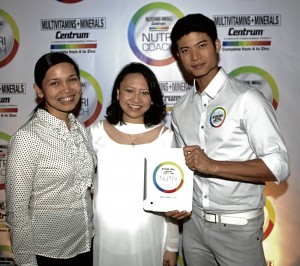
The Filipinos’ penchant for eating is undeniable that it’s normal for one to eat at least five times a day.
In Instagram alone, this Filipino “relationship” to good food is proven with more than 21,000 food photos uploaded with the hashtag “pinoyfood.” One can see what the Filipino diet is composed of from all-time favorites like adobo and sinigang to mangga’t bagoong and bibingka.
Despite this, the latest survey conducted by the Food and Nutrition Research Institute (FNRI) found 70 percent of Filipino households nutrient-deficient.
“We are not getting the nutrients from what we eat, maybe because we are not eating the right kind and right amount of food,” professor Liezl Atienza of the University of the Philippines Los Baños said.
One fact about nutrition is that a person may appear normal but may have a form of malnutrition that is less obvious. This is called hidden hunger or micronutrient deficiency—a state where you are not getting the nutrients that your body needs.
Atienza noted that the Filipino diet is becoming poor in quality. “There is an increasing consumption of meat and meat products, and a decreasing consumption of fruits and vegetables,” adding that “our diet is becoming high in fat, salt and sweets, and less in the essential vitamins and minerals.”
With the increasing number of lifestyle-related diseases in the country, multivitamin brand Centrum recently launched a nutrition and diet watch program that will keep track of the regular Filipino diet and compute the nutritional value of the food Filipinos eat.
Available online, Nutricoach is a program tailored for the Filipino diet. “All of our food items were based on the food composition table that was computed by the FNRI,” Centrum brand manager Joy Ong said. “With the help of nutritionists, we computed the nutritional value of the common Filipino dishes.”
To date, there are over 100 dishes in the system and more will be added, especially food and beverages that are becoming more common to Filipinos like milk tea.
Strive to be healthy
Based on research, Ong said that a lot of people strive to be healthy but face the difficulty of doing such.
“This tool enables you to see if you need to augment your diet with fruits and vegetables.”
One only needs to key in basic information—name, age, gender, height, weight—and indicate one’s level of physical activity. Those with diabetes, high cholesterol, heart disease and high blood pressure can also avail themselves of the program as it is also designed to cater to them.
Nutricoach also allows one to choose specific health area one wants to focus on—energy, immunity, eye health, skin health, heart, strong bones.
After filling in all the necessary information, one can choose a diet from a list of preset menus—high fiber, high calorie, low calorie, high carbohydrate/low protein, low carbohydrate/high protein, on-the-go/high fat—or customize one’s own.
When done, one’s body mass index (BMI), body weight and calorie intake are shown based on the menu chosen. A recommended diet plan is also presented below one’s ideal BMI, body weight and calorie intake.
“Nutricoach makes people aware. It makes you knowledgeable of what you need to be healthy,” Centrum endorser Mikael Daez said. “Awareness is the first step to improving our overall health as Filipinos.”
Nutricoach is available through www.centrum.com.ph.